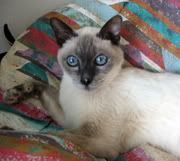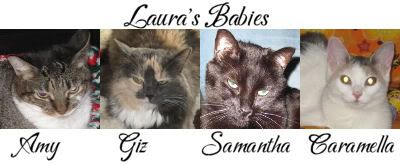Okay here I am again, you guys are awsom with this stuff, well I have a kitten and she has really gone down hill, the worst part are tremors, stiffness cant walk ect ect. the vet suspects FIP, i refused to put her down and after 3 vets and a whole lot of research we put her on clidamycin 2 days ago, and her stiffness is getting better as well as her tremors, which my vet assumed maybe she has toxoplasmosis, so we started her on the meds to see, she was getting worse and worse and no time to test, we had to try something. did a blood panel everything fine, did everything we could think of and every thing was fine. Anyways now that she is starting to look and act better, I ASSUME we are looking at this disease, she still has her hard times but is showing better results than she has all month, no diarrhea, eating well, just neurological and tremors ect. With this said I have a million unanswered questions.....anyone know?
1. Since she has had neuroloigcal problems from this, tremors stiffening ect, will she ever completely recover?
2. Are my other cats at all at risk to getting it from her?
3. Will there still be a chance I could loose her?
4. The clidamycin seems to be making her nausuas, is there anything I can do with this med to help her not feel that way, this is a 21 day dose thing, I feel bad for her?
5. I hear that once a cat has this they always have this, any one know about this, especially since they all have it, doesnt make since?
will have more but lets start here
By the way, Casey did not have to redo his surgery and is doing great, he is a little snot,,,and rowdy as ever!
carrie








 Reply With Quote
Reply With Quote









Bookmarks